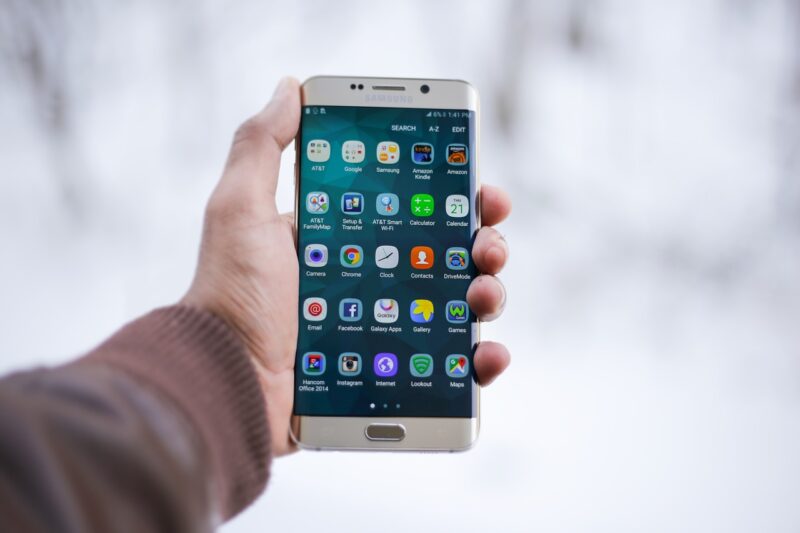
Smartphones have become an indispensable part of our lives, transforming the way we communicate, work, and play. As technology continues to evolve at an unprecedented pace, the question arises: what will our smartphones look like in 10 years? In this article, we delve into the potential advancements and innovations that could redefine the smartphone experience, from enhanced hardware capabilities to groundbreaking software developments.
1. The Rise of Artificial Intelligence in Smartphones
Artificial intelligence (AI) is already starting to enhance our smartphone experience, and its impact will only increase in the coming years. In 2033, we can expect AI to be integrated more deeply into our devices, personalizing user experiences like never before.
Imagine your phone anticipating your needs—understanding your preferences, daily routines, and responding intelligently. Here are a few potential applications of AI in future smartphones:
- Smart Personal Assistants: Rather than simple voice commands, AI-powered assistants could engage in meaningful conversations, schedule appointments, and manage tasks seamlessly based on your preferences.
- Real-Time Translation: Imagine conversing with someone in a different language while your phone translates the conversation live, breaking down language barriers effortlessly.
- Adaptive Learning: AI could learn from users’ behaviors and improve its functionalities over time—suggesting apps, managing battery life, and optimizing productivity based on individual habits.
AI will empower smartphones to become intuitive personal devices, enhancing our day-to-day tasks while freeing up time for what truly matters.
2. Foldable and Flexible Displays
The trend of foldable smartphones is just the beginning. In the next decade, we can expect displays to morph completely, resulting in smartphones with flexible, adjustable designs. These devices could be folded, rolled, or expanded, adapting to users’ needs and environments.
More potential developments in display technology include:
- Ultra-Slim Designs: New materials will allow for even thinner devices without compromising durability, making smartphones sleeker than ever.
- Transparent Displays: Imagine a phone where the screen is semi-transparent. Using augmented reality, your phone could overlay information on real-world environments, revolutionizing how we interact with the digital and physical worlds.
- Immersive Screens: Devices may offer bendable or curved screens that create a more immersive multimedia experience, blurring the lines between reality and digital content.
Foldable and flexible displays will undoubtedly transform smartphones into adaptive, multifunctional tools.
3. Enhanced Connectivity with 6G Technology
As we transition into the era of 6G connectivity, smartphones will experience an unprecedented increase in internet speed and reliability. Future smartphones will leverage this technology to create new possibilities for communication, data sharing, and multimedia streaming:
- Instantaneous Downloads: Downloading entire films or large applications will take mere seconds, allowing users to access high-definition content seamlessly.
- Improved Virtual and Augmented Reality: Enhanced connectivity will make augmented and virtual reality experiences smoother and more integrated into everyday tasks, from remote training sessions to virtual travel experiences.
- Smarter IoT Integration: Future smartphones will serve as central hubs that control smart home devices, vehicles, and other IoT equipment with minimal latency and maximum efficiency.
The increased connectivity brought by 6G will change how we interact with our devices and other smart technology, setting the stage for smarter living.
4. Battery Life Innovations
Battery technology has long been a challenge for smartphone manufacturers. In the next decade, we can anticipate significant breakthroughs in battery life and charging technology:
- Graphene Batteries: Graphene-based batteries are predicted to charge faster and last longer than conventional lithium-ion batteries. Imagine smartphones with only minutes of charging time for days of use.
- Solar Charging Technology: Future phones may incorporate wireless solar charging capabilities, allowing them to recharge themselves throughout the day without relying solely on electrical outlets.
- Advanced Energy Management: Smart power management systems will prioritize essential functions, optimizing battery usage intelligently based on the user’s behavior and needs.
With these options, battery anxiety could become a thing of the past.
5. Integration of Health Monitoring Features
Wearable technology has already started revolutionizing health monitoring, but future smartphones will likely include advanced health features, creating a comprehensive health hub. These features might encompass:
- Real-Time Health Analytics: Continuous monitoring of vital signs, predicting potential health issues before they arise through AI analysis and alerts.
- Non-Invasive Blood Sugar Monitoring: Diabetics could benefit from devices capable of tracking blood glucose levels seamlessly without finger pricks, improving quality of life and disease management.
- Mental Health Support: Using AI and biometrics to provide personalized mental health recommendations, emergency alerts, and reminders for self-care practices based on detected stress levels.
Smartphones will play an increasingly significant role in maintaining users’ overall health and wellness, reshaping the concept of personal devices.
Conclusion
The future of smartphones is undoubtedly exciting, with technological innovations set to revolutionize how we interact with our devices and the world around us. From AI enhancements and flexible displays to 6G connectivity and advanced health monitoring, our smartphones will undoubtedly evolve into essential life management tools that empower us in ways we have yet to imagine. As we approach this new era, it’s essential to stay informed about these advancements, as they will redefine convenience, productivity, and daily engagement with technology.







